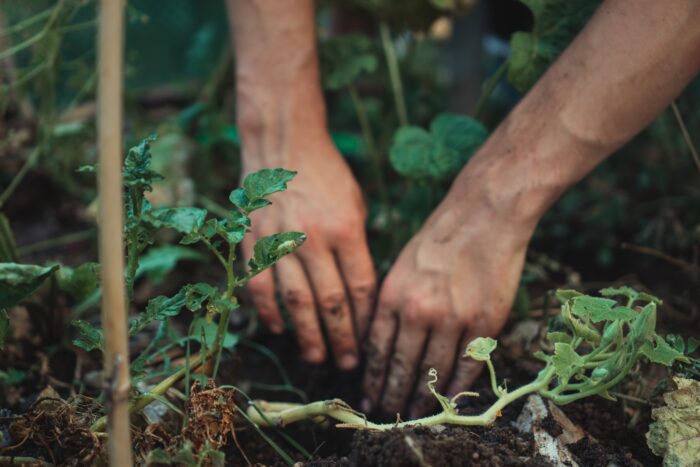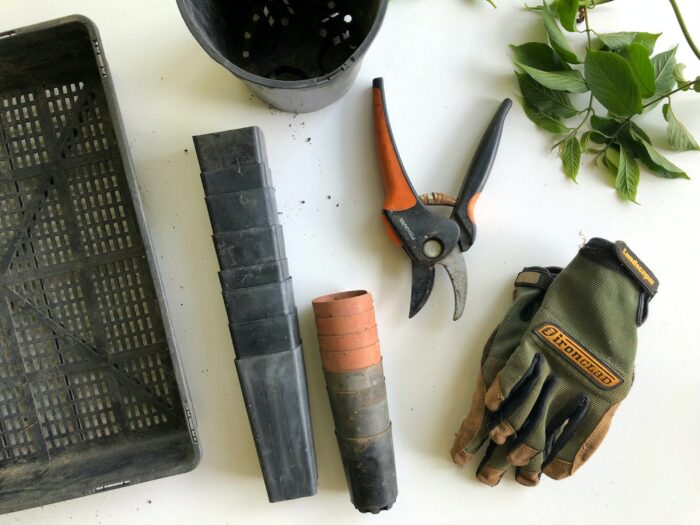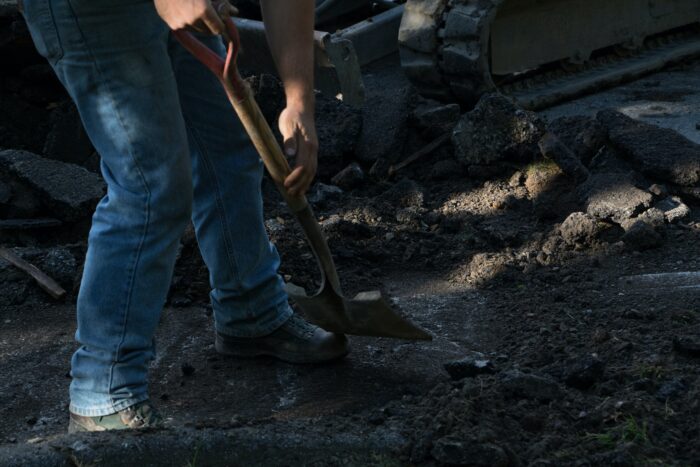Ericaceous plants are defined as those which require acidic to neutral soils (pH7 or lower) to thrive. They also generally do poorly in more alkaline conditions, and especially in soils that contain large amounts of lime.
This can present gardeners with a significant challenge, as some of our favourite plants and trees are classed as ericaceous. Rhododendrons, azaleas, camelias, hydrangeas, holly, aster, magnolia, Japanese maple, juniper, and even fruits like blueberries, raspberries, and cranberries are all ericaceous plants.
To make matters worse, the likelihood of you just happening to have ericaceous soil, or soil that ericaceous plants like, is slim. Really slim. Almost all the world’s natural distribution of soil is alkaline. So how do gardeners, landscapers, tree growers, and farmers grow such demanding and needy crops and flowers? It’s simple really – they give them a helping hand by supplementing the soil with ericaceous compost, or even making their own (see below).
This enables those with green-fingered tendencies to control and create a much healthier environment for acid-loving Ericaceae plants. That said, it’s not without its challenges. That’s why Corker has compiled this complete guide on how to use and make ericaceous compost.
What is ericaceous compost?
Made up of a highly acidic mixture (usually hovering at pH levels between 4.5 and 6), ericaceous compost is used to enhance the usually naturally sour soil levels we have to work with. A case of “it does what it says on the tin”, it is designed for Ericaceae plants.
In short, you use it to acidify your soil. As we mentioned above, almost all soil is naturally alkaline, or “sweet soil” as it’s also known. So, if you’re going to grow any plants from the Ericaceae family, or just those that prefer acidic soil, they’re going to need a helping hand.
What happens if you plant Ericaceae plants in alkaline soil?
There are over 4,000 plants in the Ericaceae family. Their natural preferences for living conditions range from acidic to even usually infertile soils. Ericaceous compost is organic matter with a pH level of well below 7, which is considered neutral.
For plants that require acidic soil, they will be unable to absorb enough iron and other key nutrients if you plant them in more alkaline conditions. Eventually, they will turn a sickly yellow colour. They will also be very unlikely to flower fully, or even at all in some cases. You can also expect to see stunted roots and some stem deformities, depending on the type of plant.
What you’ll need
As well as the key ingredients for making your ericaceous compost, you’ll also need some equipment. First and foremost, will be a compost heap or bin. A rudimentary compost bin can easily be constructed from wooden pallets. This is probably the most eco-friendly option and is easily accomplished with minimal output and time. We’ve included a link to a good guide on how to construct a compost bin using pallets here. Be mindful to avoid pallets that have been heat or pesticide treated – which will usually be marked HT or MB respectively. These will be laced with contaminants that will be no good for your compost, and hazardous for your plants.
You can also purchase a wide range of ready-made compost bins that will be up to the job. These range from large, multi-bin models to tumblers, which are ideal if space is limited.
The second thing you’ll need is a way of measuring the pH of your compost (and your soil) on a regular basis. These range from simple pH test strips to sophisticated electronic readers. Whichever you go for, it’s a case of monitoring your organic material to see if it is decomposing with the required acidity.
Where to position your compost heap
When it comes to where to put your compost heap, your first priority should be ensuring it sits on top of free draining soil. If this can’t be achieved, then at the very least, it should be in a place where water is unlikely to pool during wet weather.
Your second priority should be shade. A spot that attracts regular, or even total shade is ideal. But partial shade is also acceptable. So, in short, build your bin or place your pile in the shade and in an area with good drainage.
Building the pile
When you’re at the point of being able to add material to your compost bin or pile, it’s good to start with the bulkier items first. Twigs and leaves often make for a good base layer. Then, as you go, the idea is to try and build interconnecting layers of green and brown material.
For your green material, look to add items including:
- Grass cuttings
- Flowers, stems, and other green garden items
- Fruits, including citrus varieties
- Vegetables and vegetable matter
Contrarily, your brown items will include:
- Cardboard
- Leaves
- Paper
- Sawdust
- Straw
- Twigs
What you’re aiming for is a good blend of these materials. No one specific item or ingredient should dominate. Allowing this can have a negative effect on the compost. For instance, if you’re compost is overly populated with grass cuttings, you’ll be creating a slimy sludge rather than compost.
Your pile should be no more than five feet high (another reason why pallets make a good choice when it comes to building your compost bin), and the contents will need to be kept moist. On the flip side of that, you’ll need to take care not to let it get too waterlogged and soggy. You’ll also need to regularly aerate the material by turning it over with a fork.
Depending on your set up, providing your compost heap with some shelter – such as with a lid or cover, will enable you to keep out excess rainwater and retain warmth better. If you have multiple bins, you’ll officially only need to cover the bin housing the finished product. But compost in all stages will benefit from a little protection from the elements if you have the space and means. In the case of ready-made compost bins, almost all of these are weatherproof and are fitted with removeable lids.
How to make ericaceous compost
To specifically make ericaceous compost, there are organic items you can add to your pile that will naturally boost its acidity. These include:
- Citrus fruits. Chop into smaller pieces so they decompose more easily, and don’t forget to include the peel!
- Coffee grounds. And used tea bags – most of which are now plastic free, but don’t forget to check
- Fine bark/wood chips. If you can add these from a shredder, the hard work’s been done for you
- Leaves. Most have a naturally high acidic content when shed. This is especially the case for those from oak and beech
- Onions. Add these finely chopped, not whole
- Pine needles. These too boast a naturally high acidity that will transfer directly to your pile
- Sawdust. Best if from freshly cut wood
You can also acidify your soil and compost by adding supplements of sulphur, iron sulphate, and aluminium sulphate. However, these must be used with caution. In most cases, it is best to supplement your homegrown compost with a readymade, off the shelf version rather than risking the adverse effects of the more harmful supplements.
There are also some items you need to avoid adding to your compost pile if you’re looking to make it suitable for ericaceous plants, such as:
- Bones. These contain calcium (see below)
- Calcium. Calcium is naturally alkaline and will neutralise the acidity of the soil, making composting a longer and harder process
- Hydrated lime. This is an ingredient often used to speed up the usual composting process, but is highly alkaline and will negatively impact the acidity
- Manure. This includes excrement from humans, pets etc.
- Meat. Again, this usually contains high amounts of natural calcium
- Plastics. This includes glossy paper and glue
- Tap water. This is usually slightly alkaline, so rainwater is always best
Maintaining your ericaceous compost
Over time, your ericaceous compost will slowly decompose and return to something more neutral. Therefore, you’ll need to monitor its acidity and top it up from time to time with the readymade stuff or other supplements.
The soil acidity you are striving for will depend on the specific plants, shrubs, and trees you are looking to grow, but overall, you should be aiming for a pH level between 6 and 7, which is classed as ‘slightly acidic’. From there, you can tweak your mixture as required for your charges.
And don’t be surprised if you find your compost heap to be popular with the local wildlife. It’s not uncommon to find reptiles and amphibians especially, camped in your compost! Slow worms, frogs, and even toads should all be welcomed though, as they are natural pest control for your garden. When turning over the soil in June or July, as there may be reptile eggs in there (grass snakes love compost heaps for this reason!).
If you find your compost heap is attracting rodents, such as rats and mice, it’s possible you’re using elements that you’re better off avoiding – like leftover food waste.
Summary
Ericaceous plants are some of the most rewarding species to grow in our gardens. Our guide to ericaceous soil and compost hopefully shows that a little bit of preparation can make the job of keeping them happy easy and straightforward. If you’d like any advice on the supplements and compost products Corker recommend and supply, please don’t hesitate to get in touch with a member of the team.




